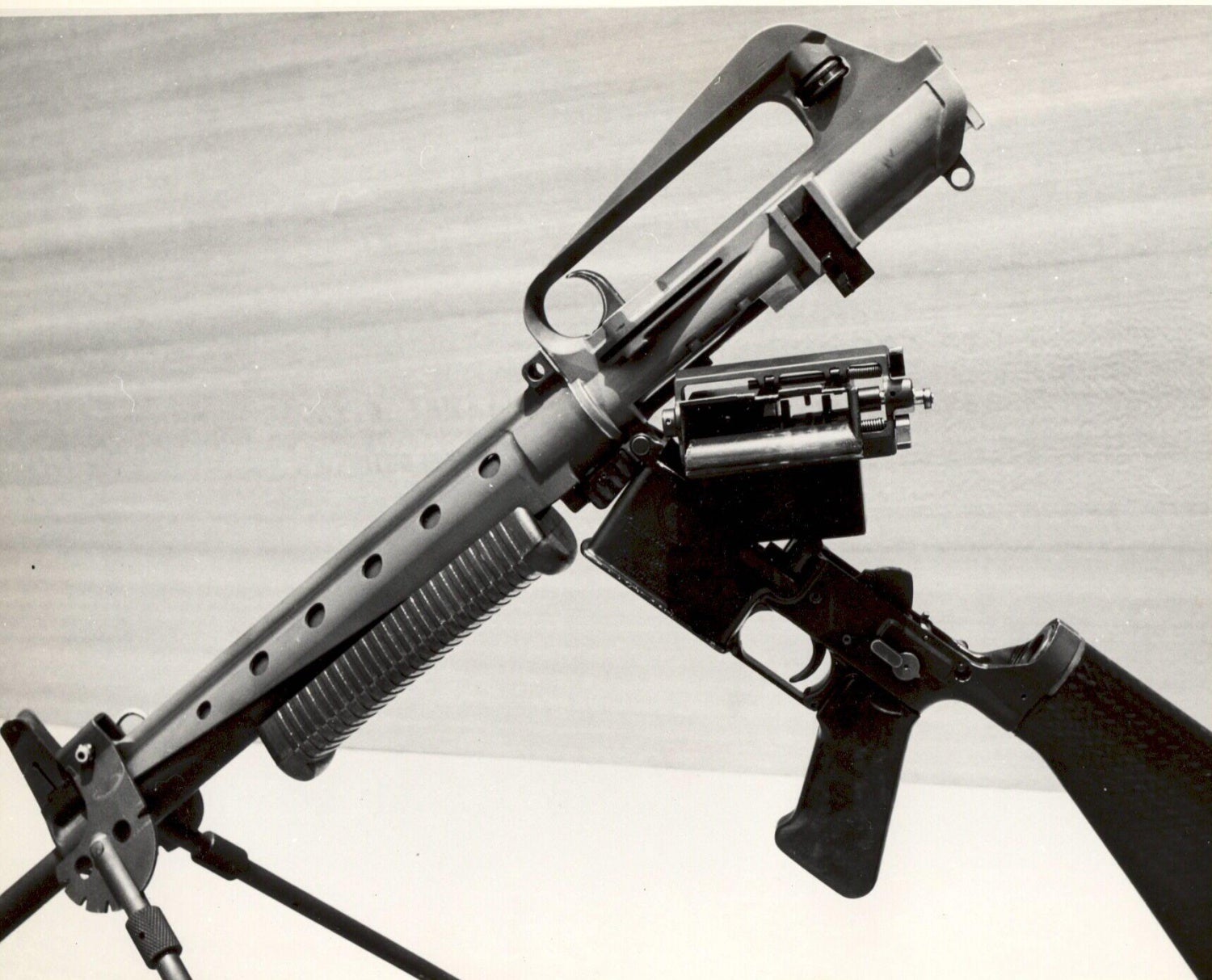The mid-late 1950s… Could there be a more optimistic time in United States history? I feel there’s no better rifle to illustrate the industry, innovation, and unbridled optimism of that time than the Armalite AR-10 7.62x51mm select-fire military rifle. Made of aerospace materials, using an advanced operating mechanism, and weighing in at an inadvisably light 7 pounds and change, unloaded, the AR-10 was an exercise in logic of the type best said “we have defeated Germany and Japan, and split the atom, why shouldn’t we do this?”
I plan to write more on the AR-10 rifle itself (including a book review of the recently-released and excellent Collector Grade book written by Joseph Evans on the subject), but today we’ll be looking at one variant that was a part of the effort to create a whole family of weapons, including sniper rifles and light machine guns, based on the aerospace wonder from Armalite. That is the infamous belt-fed AR-10:
In fact, we are really talking about three different weapons. The first two are two single rifles created by Armalite in 1957, Serial Nos. 1025 and 1026. 1025 is notable in being the first rifle fitted for the now-familiar rear-mounted charging handle, instead of the trigger charging handle that most other AR-10s and the early AR-15s used. 1025 had no bipod, and cutouts on the upper receiver (which, like all three of these belt-fed AR-10s, was a unique forging) for the belt-feed mechanism. It also used a bolt carrier fitted with cams to actuate the mechanism for feeding in ammunition belts. 1026 added a quick-change barrel feature, a bipod, and reverted to the trigger-style charging handle. Both rifles featured folding shoulder-rest buttplates, common to many support weapons of the time. 1026 was fitted with both heavy and light contour barrels, and both Armalite prototypes used much heavier profile gas tubes than their rifle variant counterparts.
Ultimately, the Armalite belt-fed AR-10s did not work well in sustained fire, but in the late 1950s, Dutch manufacturer Artillerie-Inrichtingen (A-I) began development of another belt-fed model. This model was substantially improved versus the two Armalite prototypes, and several examples were made. It was derived from earlier magazine-fed A-I support weapon experiments, and featured an improved upper receiver forging with more material, a bipod, vertical foregrip, and quick-change barrel. The A-I belt-fed AR-10, like the Armalite variants, had an easily removable belt-feed mechanism that converted the weapons back into a magazine-fed configuration when removed. According to those that tested it and one individual who owns both types, the A-I belt-fed AR-10s worked very well, much better than the Armalite models. However, there was no interest in the weapons, and they remained developmental models only.
Chuck Kramer has posted photos of a Dutch AR-10 belt-fed prototype over at his website, GunLab. They are high quality, and I recommend you follow the link and take a look.
 Your Privacy Choices
Your Privacy Choices

